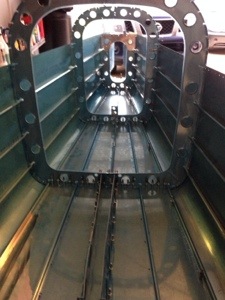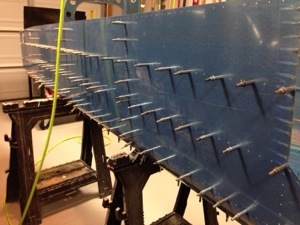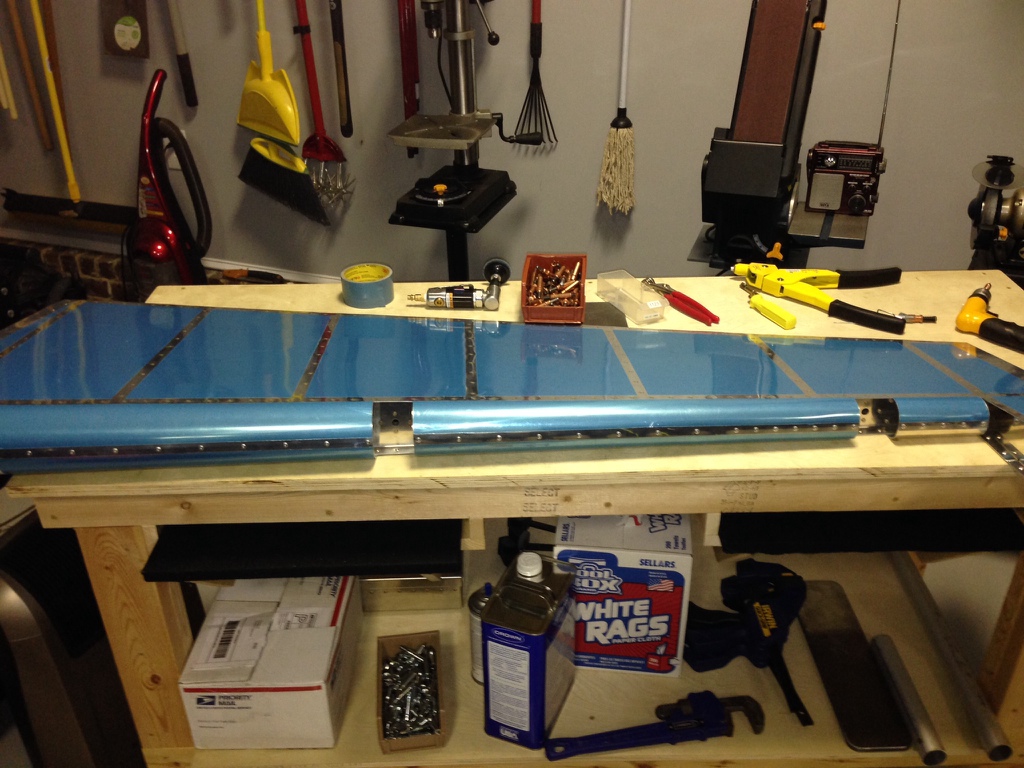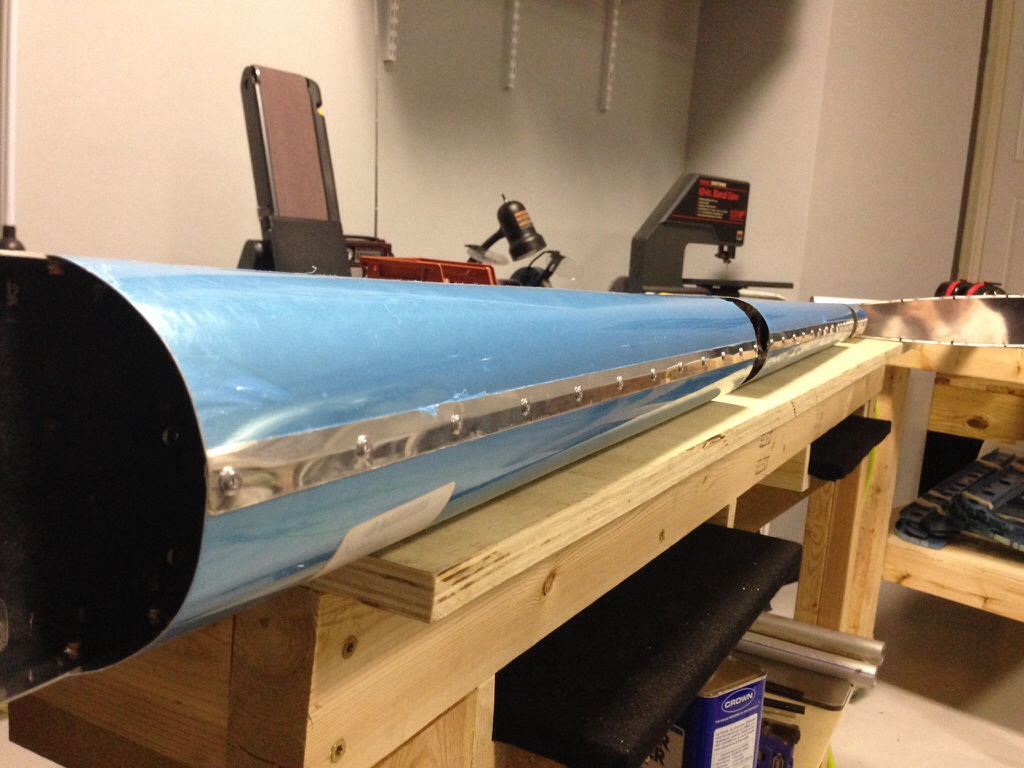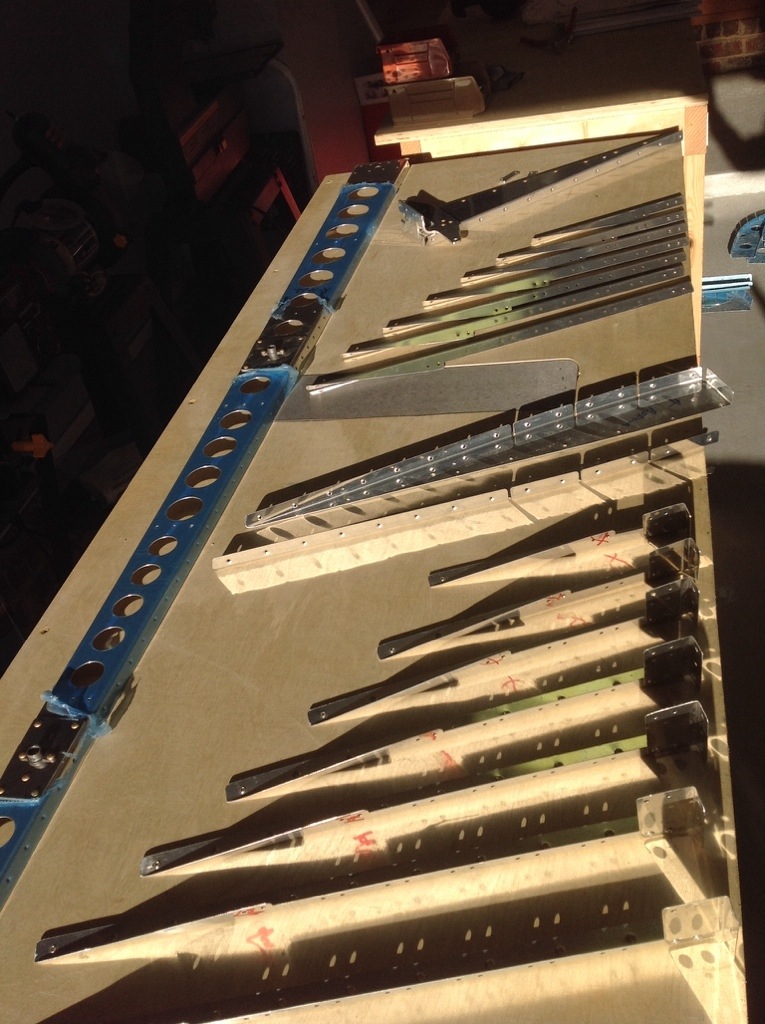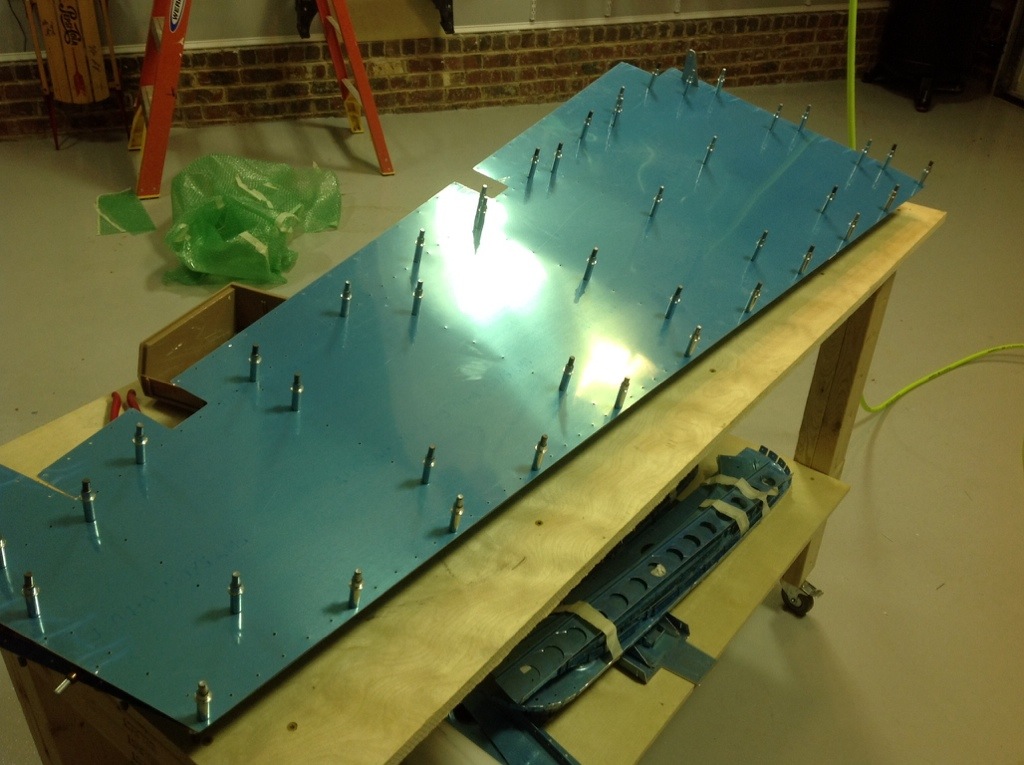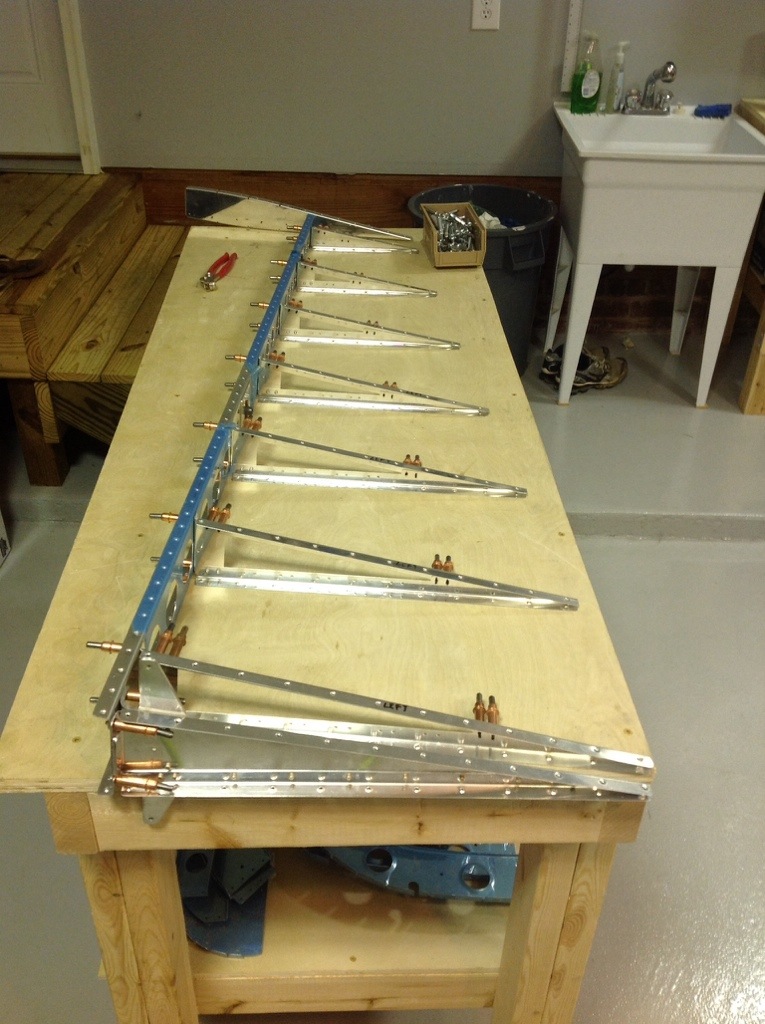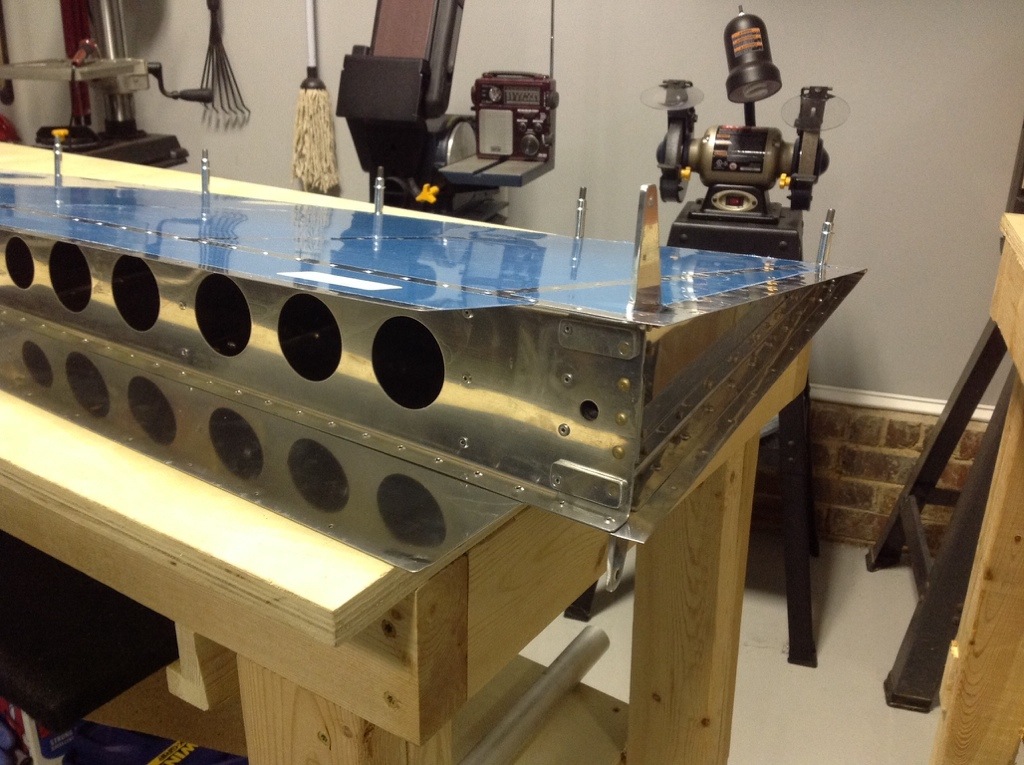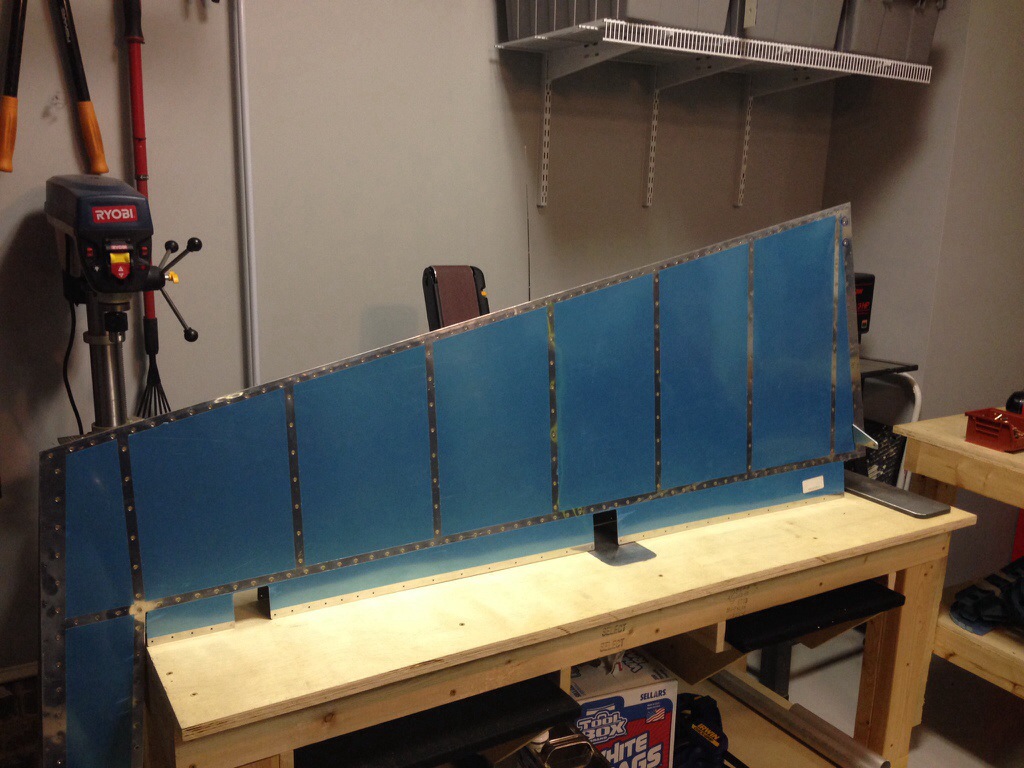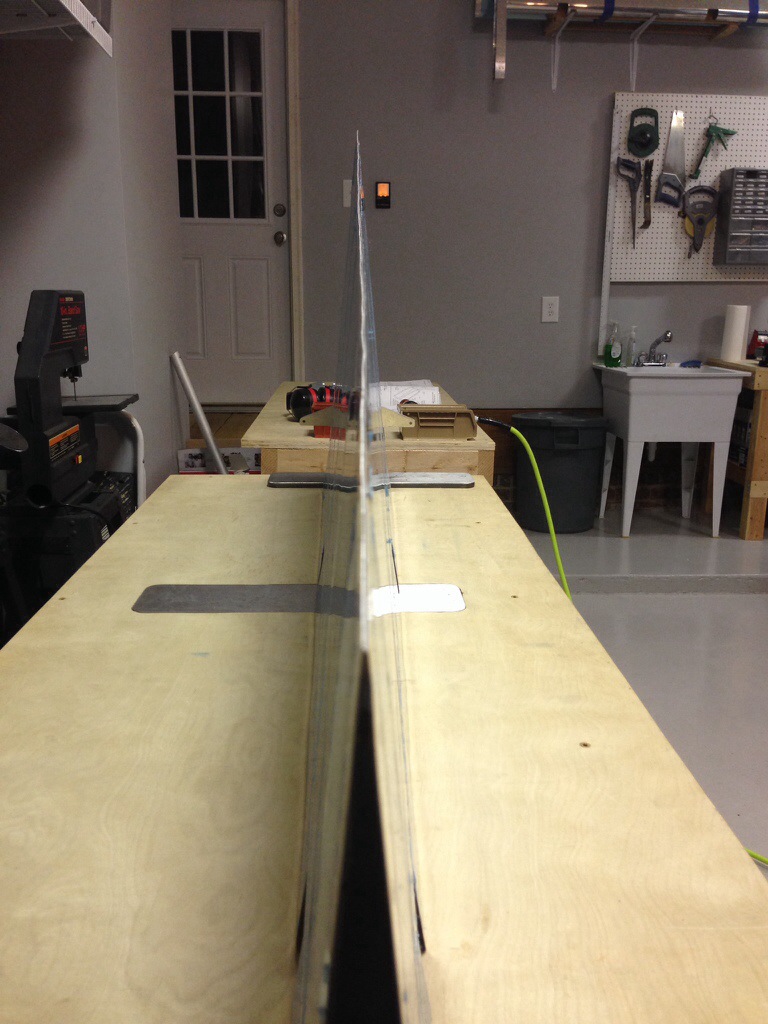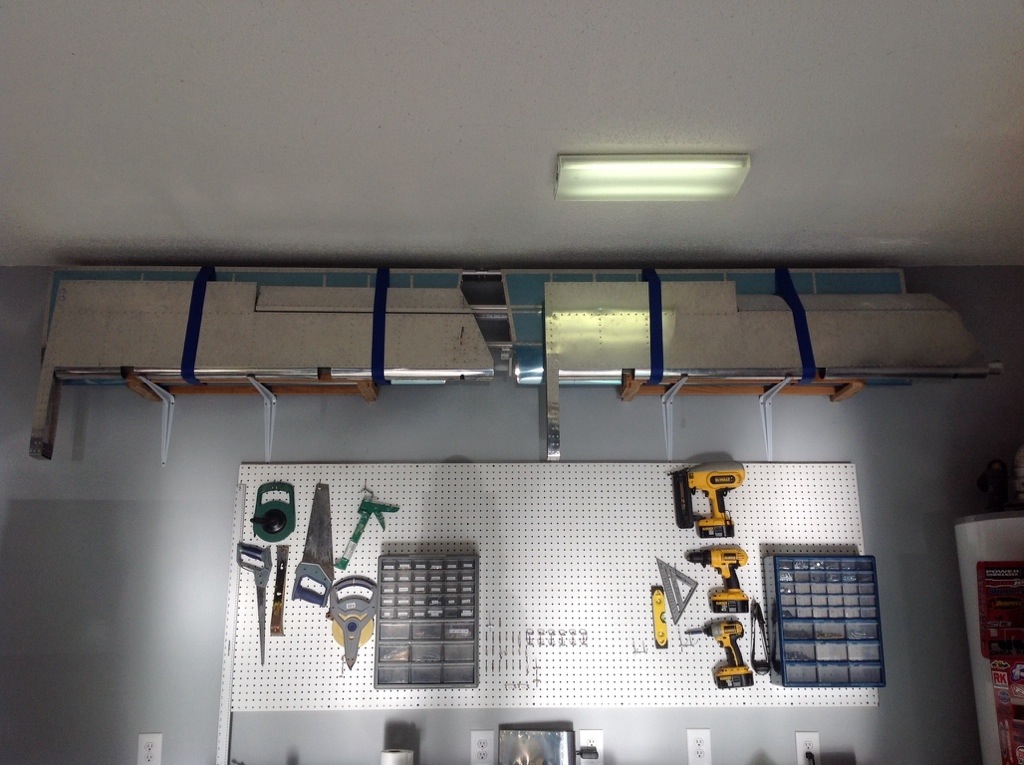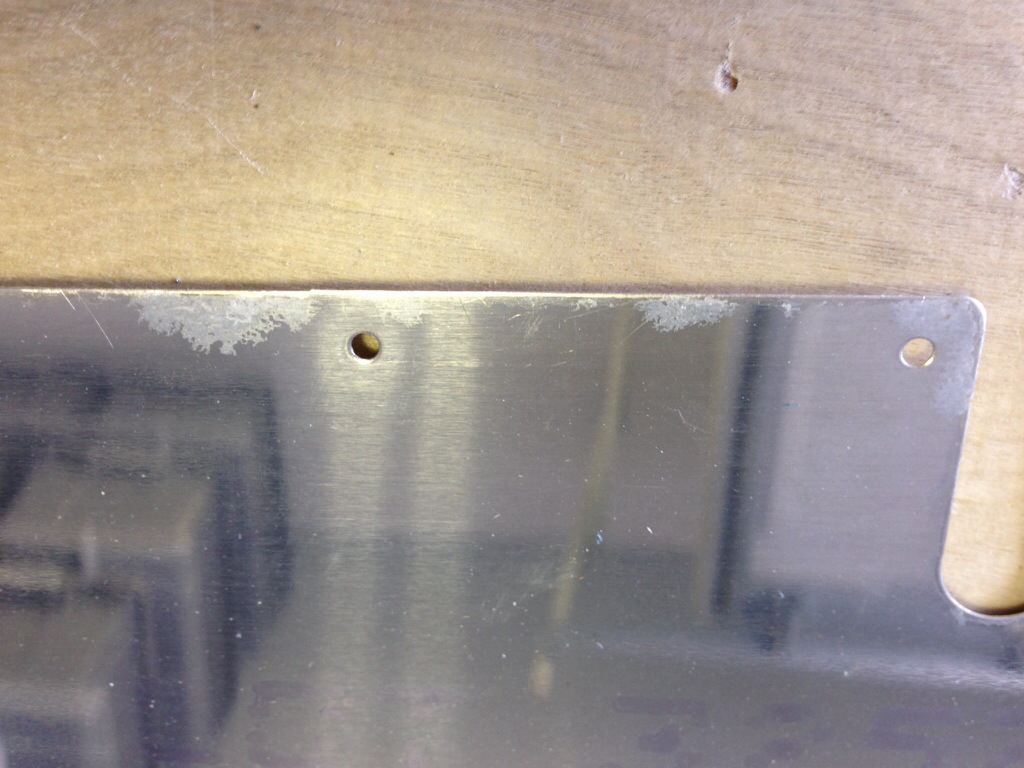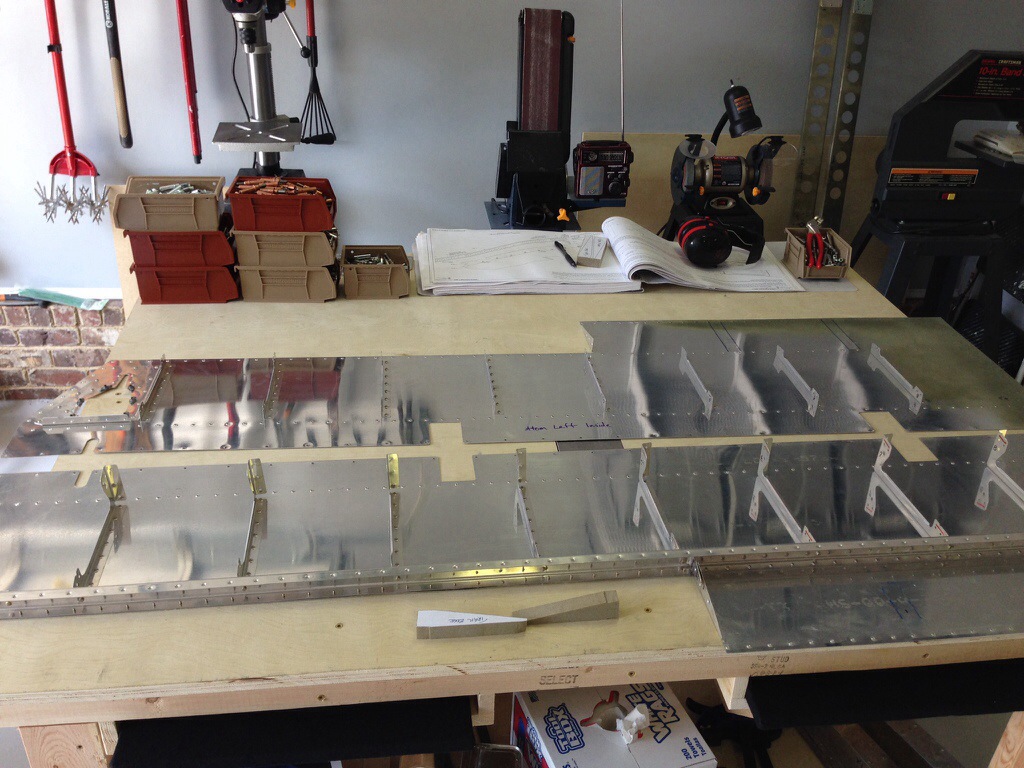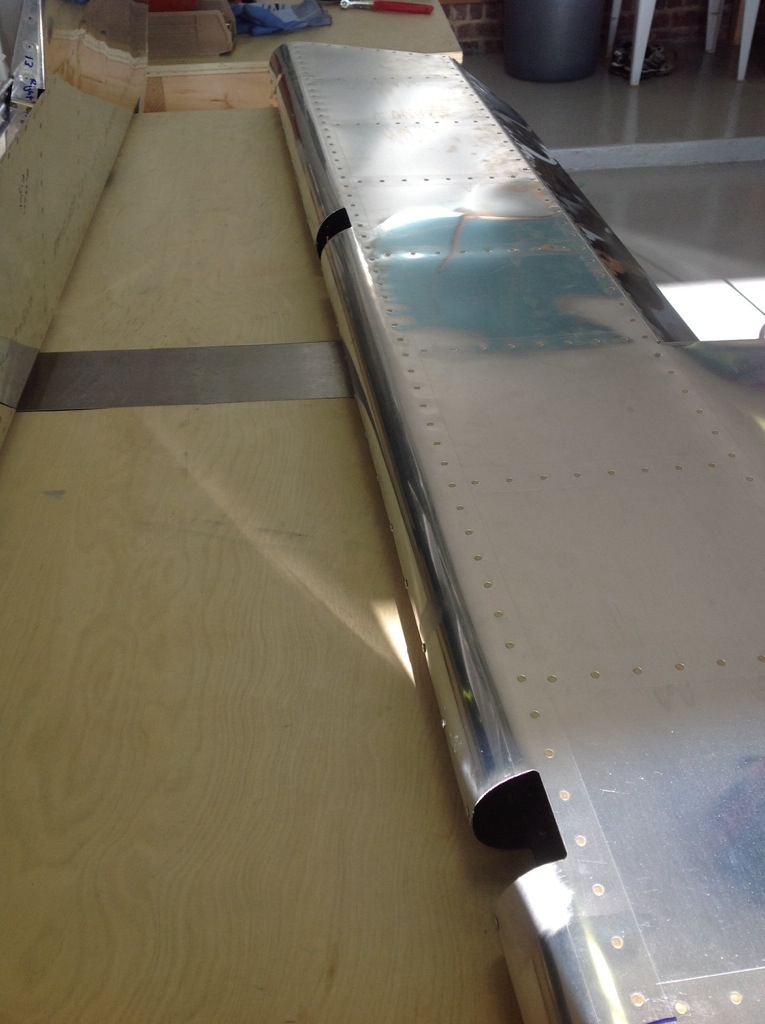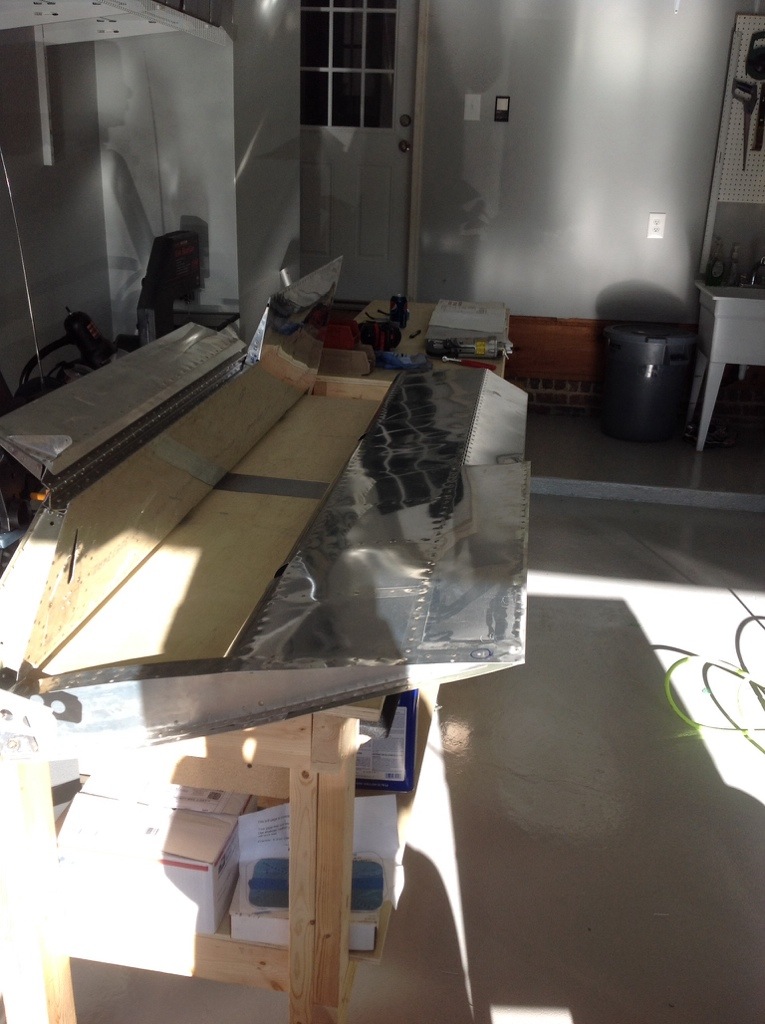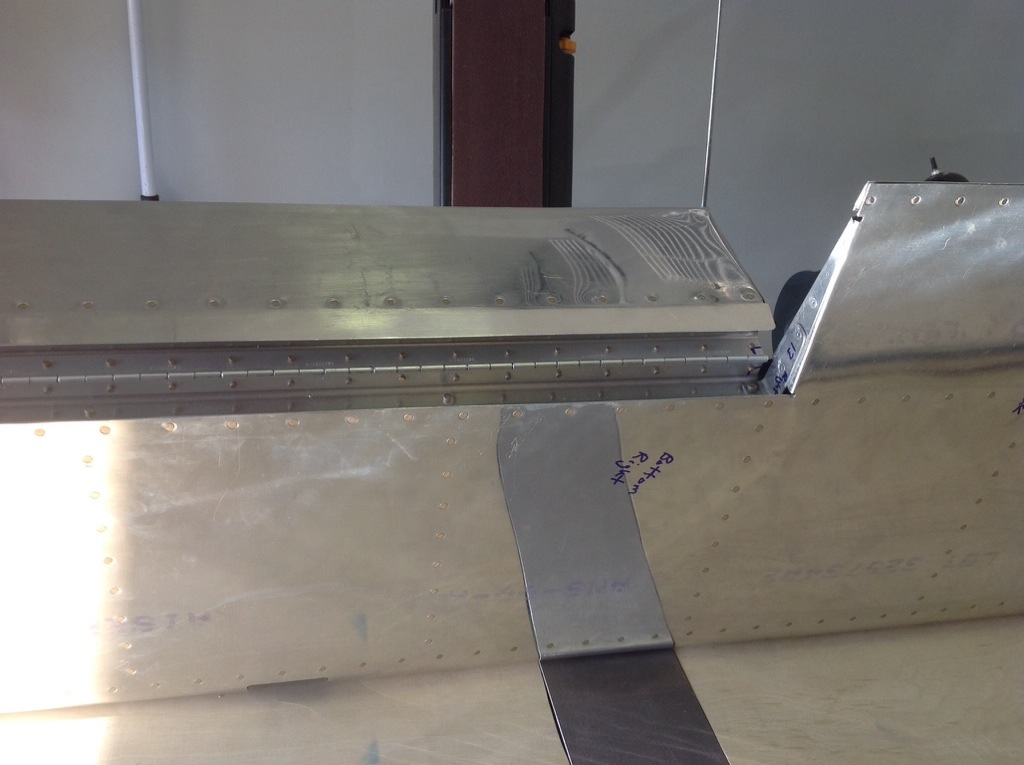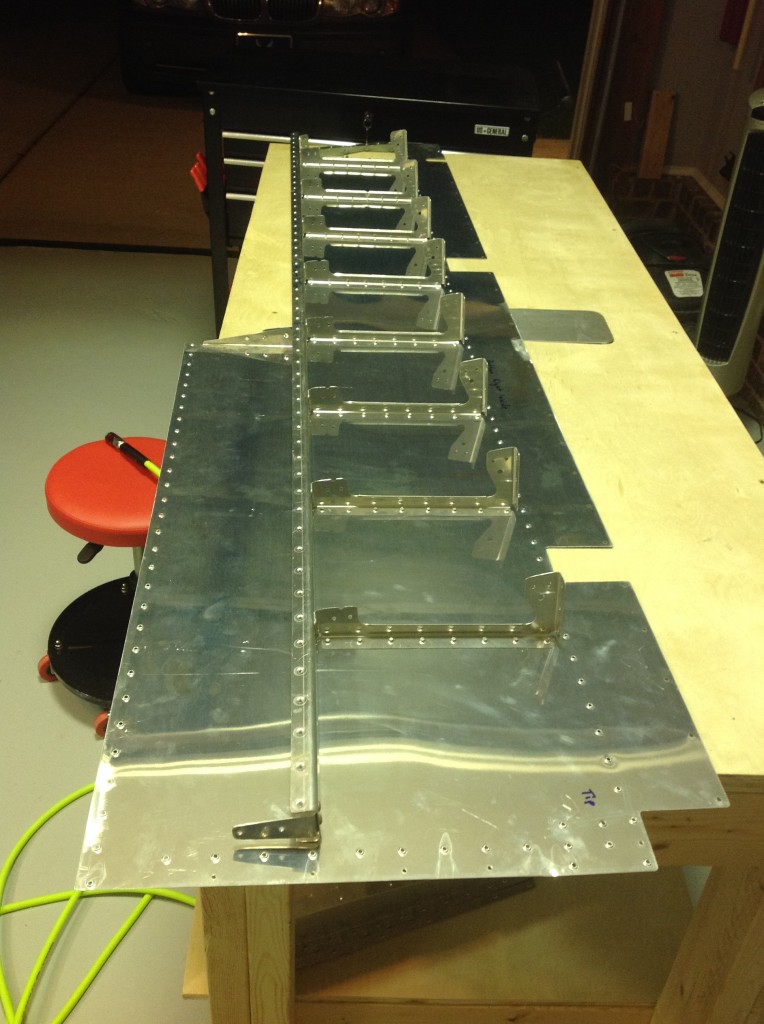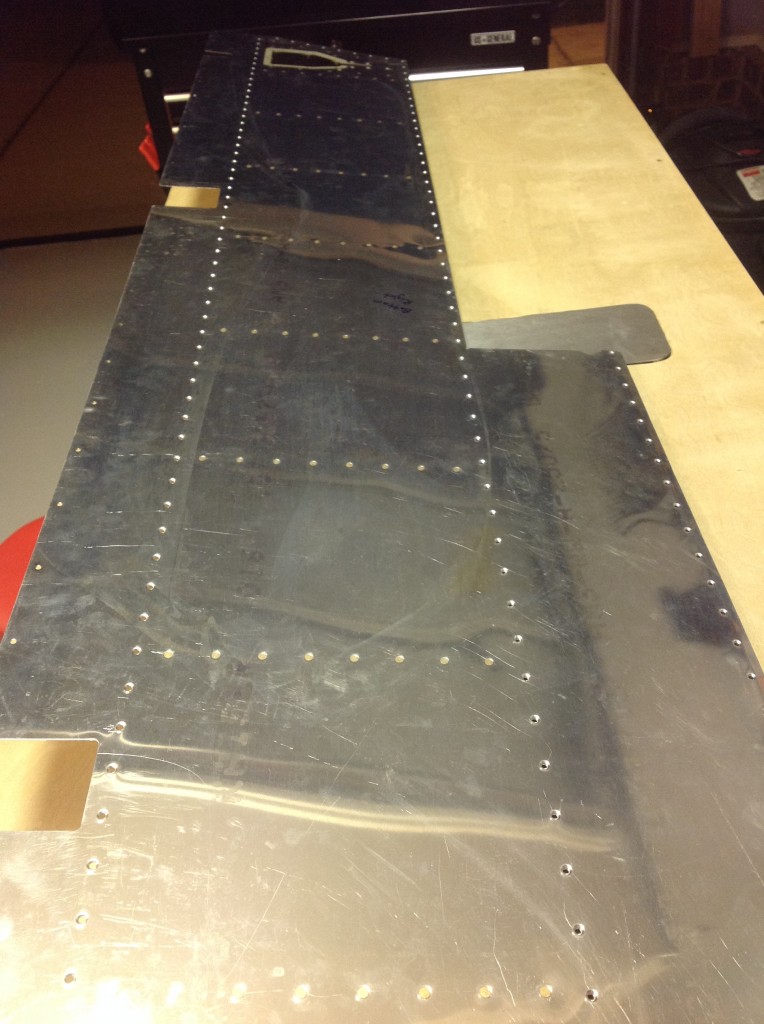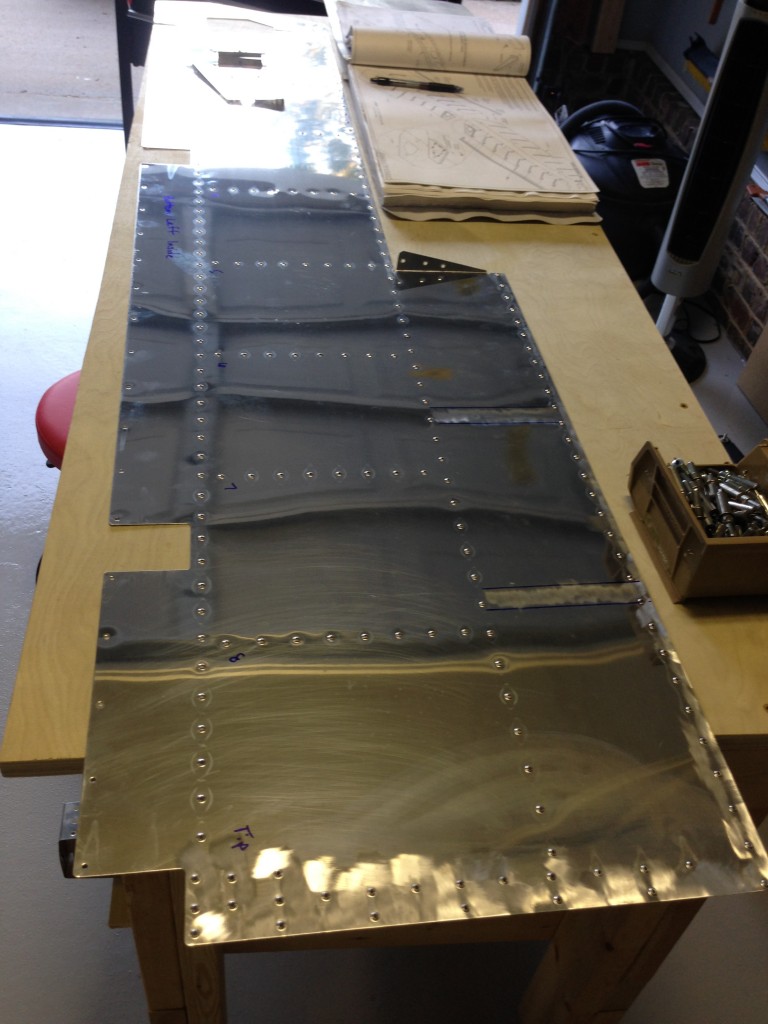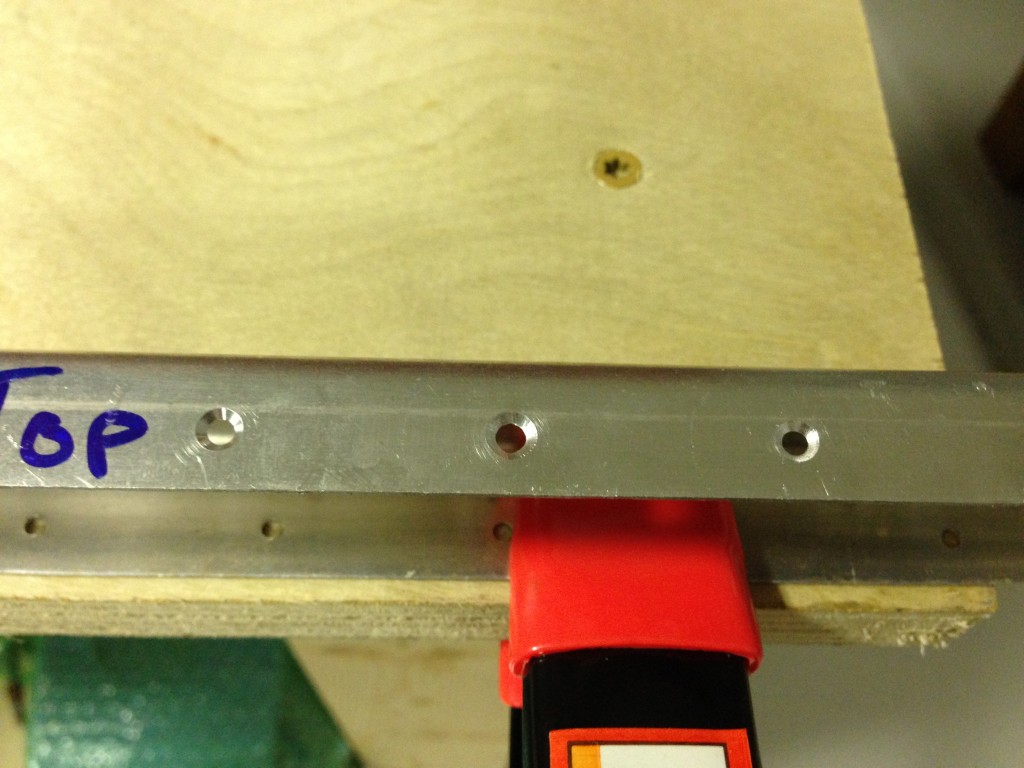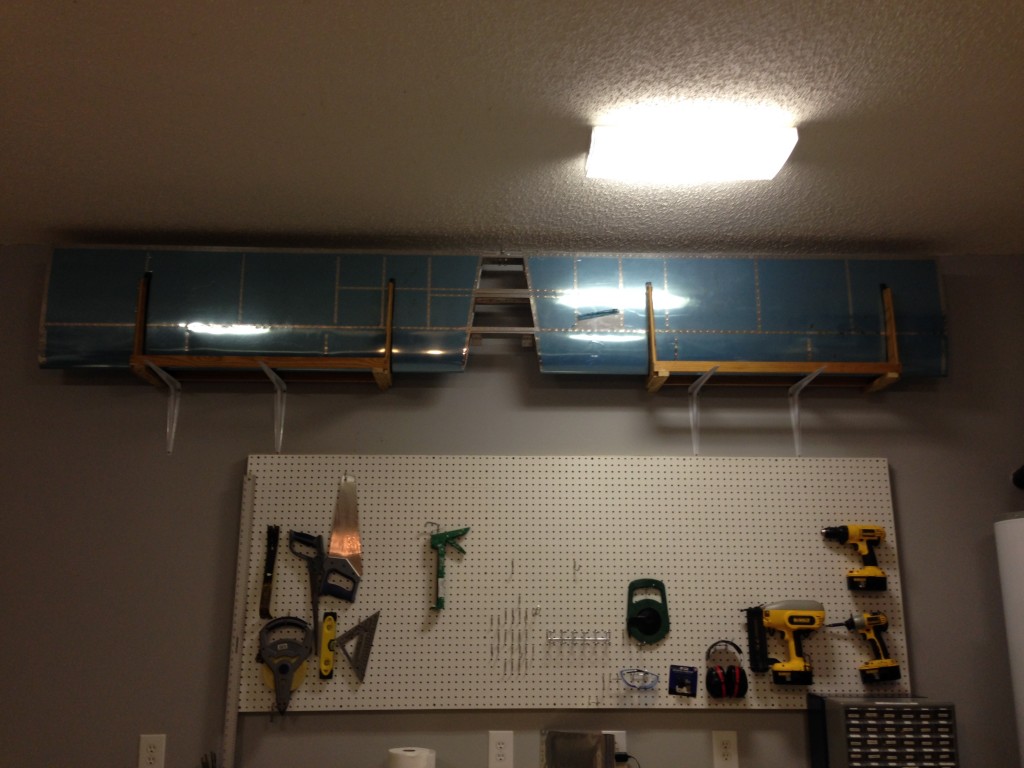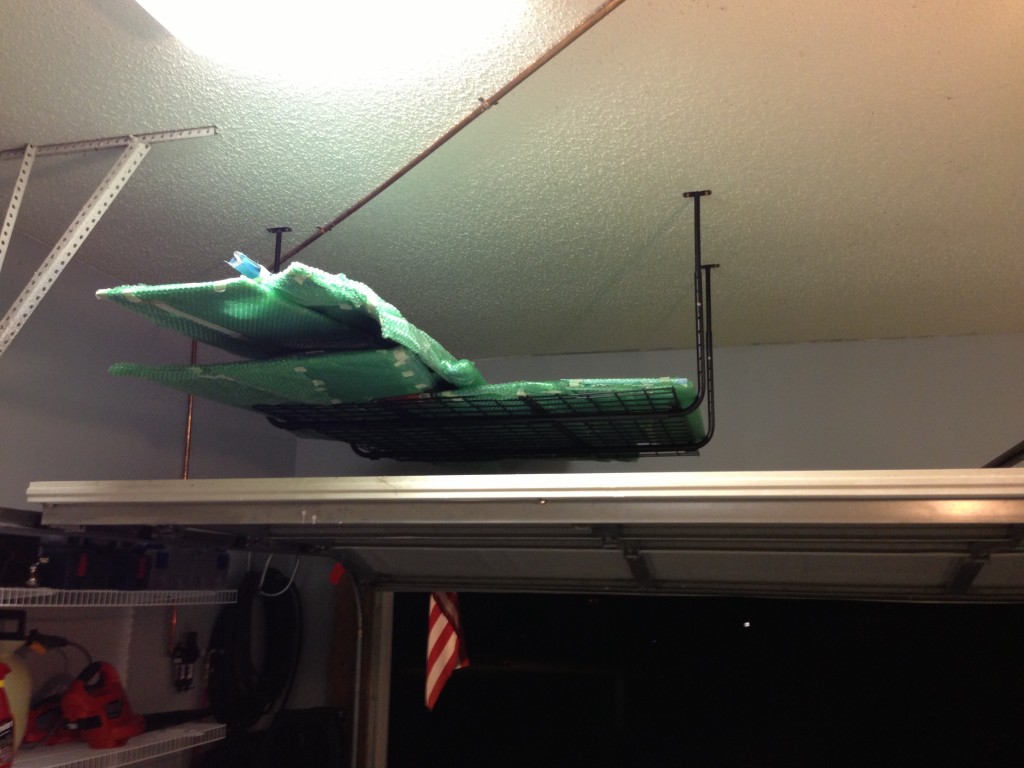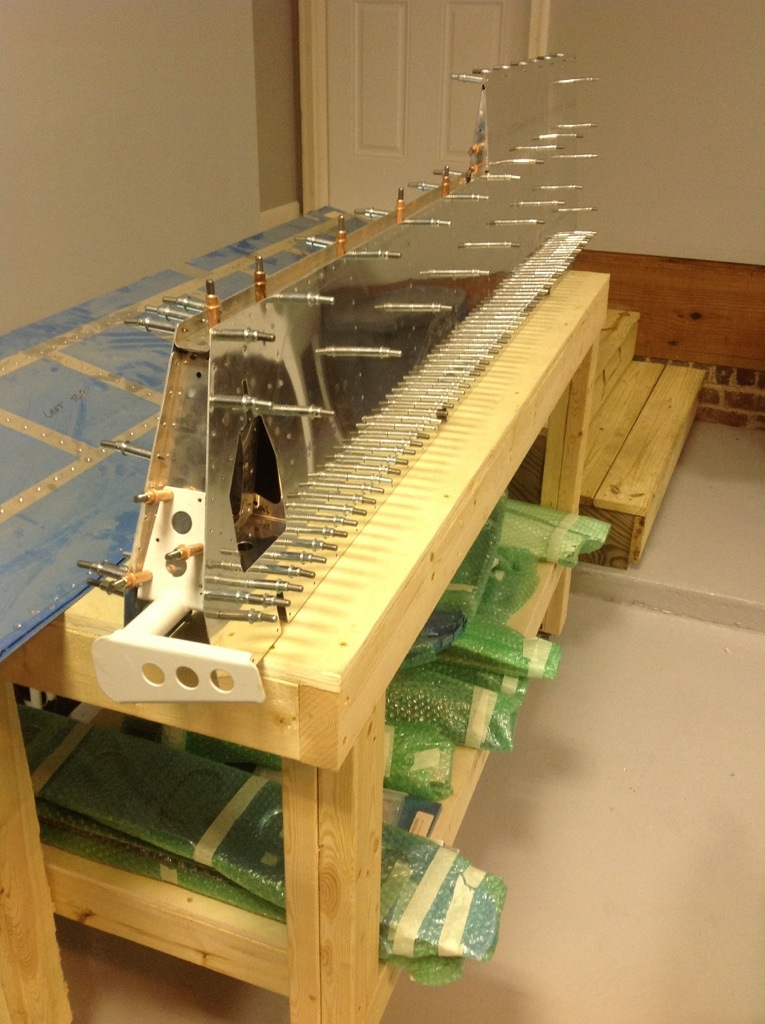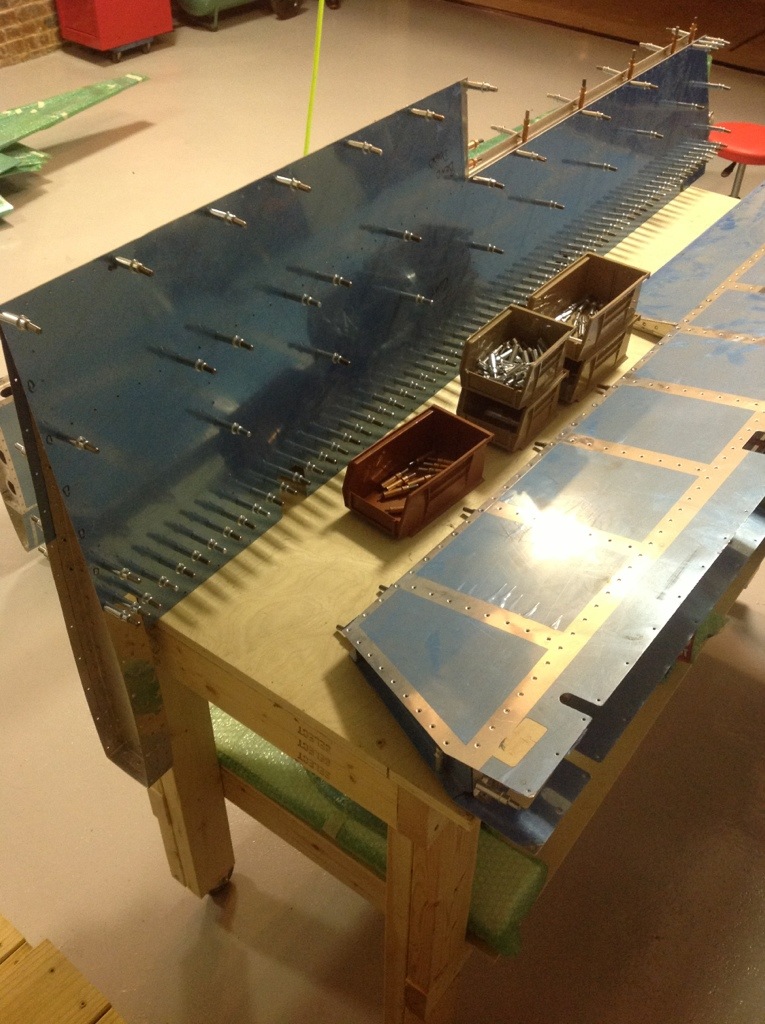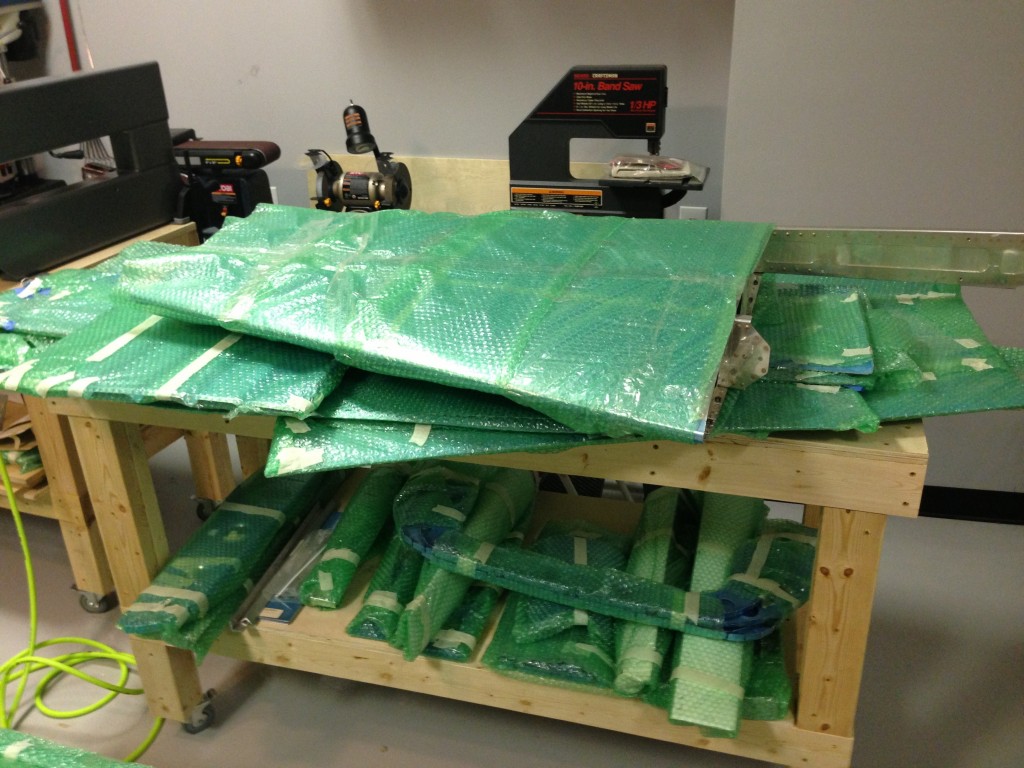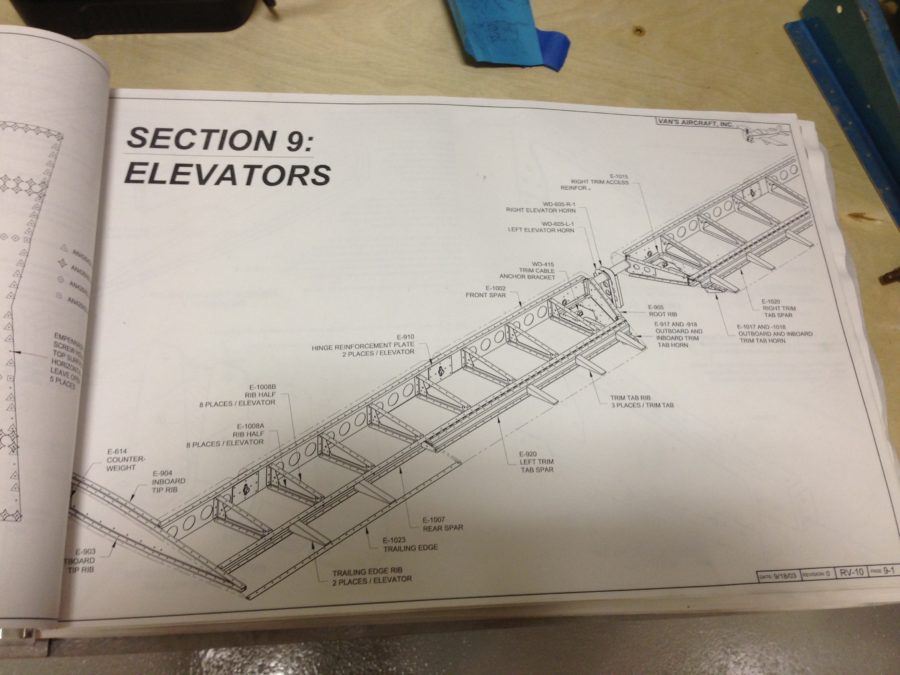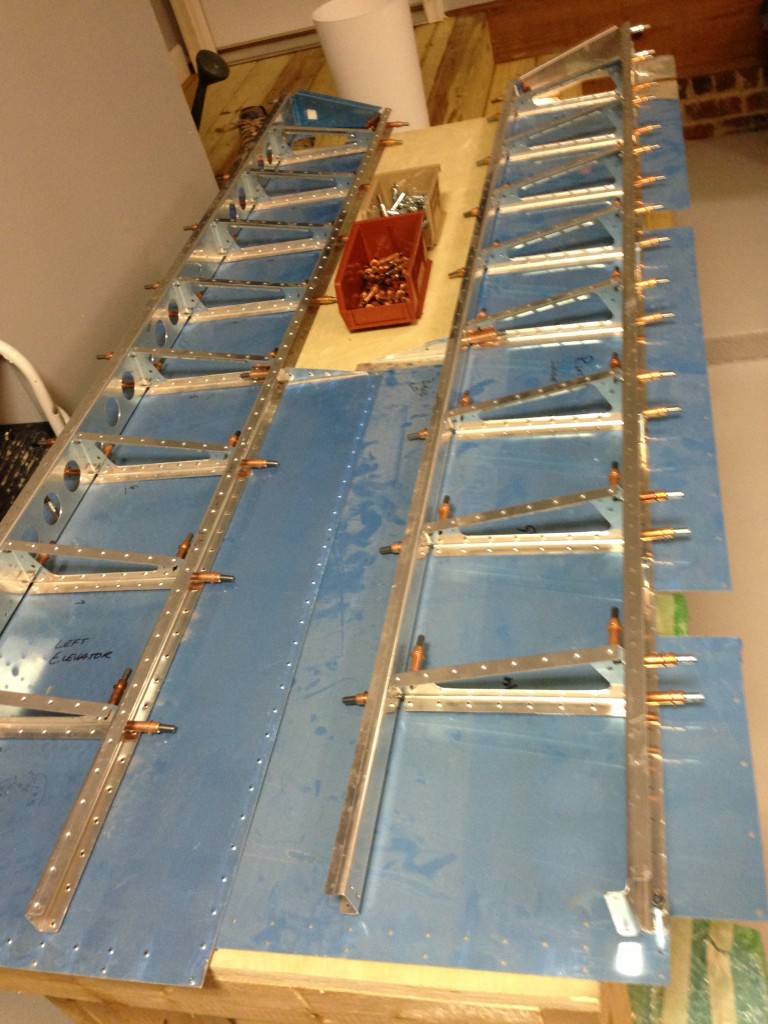It’s exciting to move to a new section of the plans! The tail cone is the first part of the fuselage to be built and looks pretty fun to complete, with some easy tasks and more advanced stuff when mounting the HS and VS. It will also hold electrical and AP/Trim components down the road.
The first step is to cut the stiffeners to specs and shape the ends. Not a hard task, but time consuming as each piece needs to be trimmed, ground, and deburred from the band saw. Once those are complete (9 total), they are labeled and then the ribs are clecoed together. Lot’s of drilling on this, as the stiffeners are put together temporarily with the ribs and skins for the tail cone. You then use the skins to match/final drill the stiffeners on a center line marked earlier.
I’ve finished drilling all ribs, stiffeners, and skins but failed to read ahead enough in the plans before disassembling an entire side skin. Not a huge set back, but that’s a lot of clecos to put back in place. The tail kit is basically mocked up completely before taking it all apart and preparing it for riveting later on.


